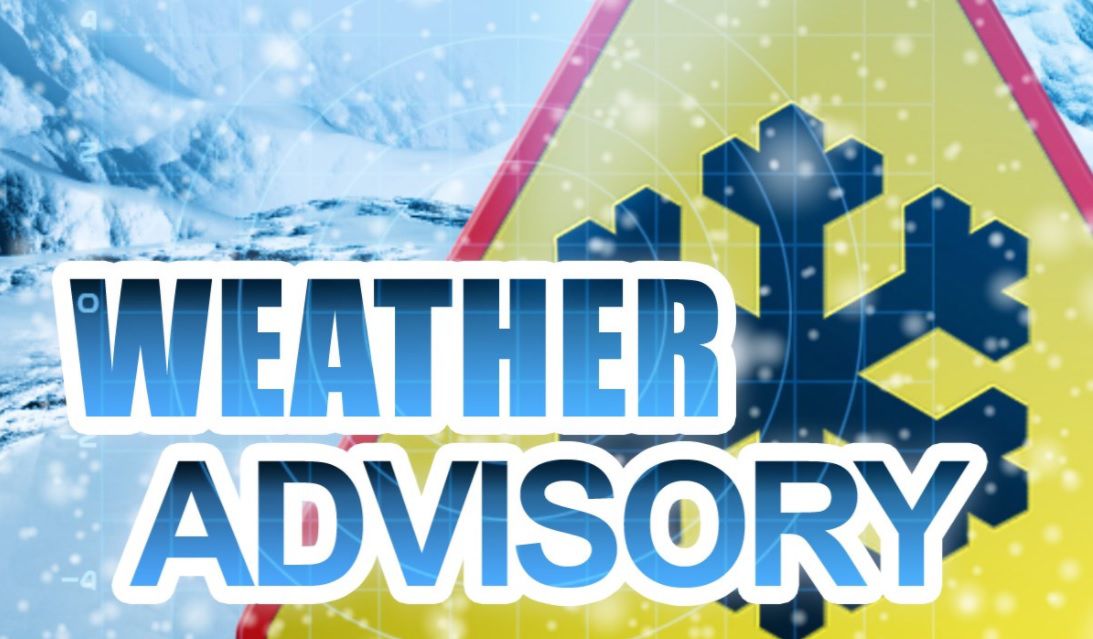Navigating Winter Weather Advisories And School Closings

Table of Contents
Understanding Winter Weather Alerts and Warnings
Knowing the difference between various weather alerts is the first step in effective winter weather preparedness. Understanding the severity of each alert helps you take appropriate action.
Types of Winter Weather Alerts
Several types of alerts indicate different levels of winter weather severity. It's important to understand the distinctions between them:
-
Winter Weather Advisory: This alert signifies that winter weather conditions are expected but are not necessarily severe. These conditions could include periods of snow, sleet, freezing rain, or strong winds, which could cause travel difficulties. Expect travel delays and reduced visibility. Examples include light to moderate snowfall accumulating a few inches or freezing rain causing icy spots on roads.
-
Winter Storm Warning: A winter storm warning indicates severe winter weather is occurring, imminent, or likely. Significant disruptions to travel and daily activities are expected. This could include heavy snow accumulation, significant ice accumulation, or blizzard conditions. Expect significant travel delays, power outages, and dangerous conditions.
-
Blizzard Warning: This is the most severe winter weather alert, indicating sustained winds of 35 mph or greater and considerable falling or blowing snow that reduces visibility significantly for at least three hours. Travel is extremely dangerous or impossible during a blizzard warning.
Reliable Sources for Weather Information
Obtaining accurate and timely information is paramount. Here are some trusted sources:
-
National Weather Service (NWS): The NWS is the official source for weather forecasts and warnings in the United States. Their website (weather.gov) provides detailed forecasts, alerts, and radar imagery.
-
Local News: Many local news stations have dedicated weather teams that provide up-to-the-minute reports and school closure information specific to your area.
-
Weather Apps: Reputable weather apps, such as The Weather Channel, AccuWeather, and WeatherBug, offer real-time alerts, radar, and forecasts directly to your smartphone.
Remember to cross-reference information from multiple sources to ensure accuracy and get a complete picture of the impending weather.
Preparing for Winter Weather and School Closings
Proactive preparation is key to minimizing disruption caused by winter weather and school closings.
Creating a Winter Weather Emergency Kit
Assembling a comprehensive emergency kit is crucial. This kit should include:
- Flashlights and extra batteries
- First-aid kit with essential medications
- Non-perishable food and bottled water
- Warm blankets, hats, gloves, and scarves
- Cell phone chargers and a portable power bank
- Important documents (copies of insurance cards, identification, etc.)
A family communication plan is essential. Designate an out-of-state contact person that everyone can call to check in.
Monitoring School Closure Announcements
Knowing how your school district announces closures is crucial:
- District Website: Most school districts post closure information on their official websites.
- Local News: Local news channels often announce school closures throughout their broadcasts.
- Robocalls/Automated Messaging: Many districts utilize automated phone systems to notify parents directly.
- Mobile Apps: Some school districts have dedicated mobile apps for receiving closure alerts.
Have backup childcare arrangements in place in case of unexpected closures.
Responding to Winter Weather Advisories and School Closings
When winter weather hits, your response should prioritize safety and preparedness.
Staying Safe During Winter Weather
Safety should be your top concern. Follow these guidelines:
-
Winter Driving: Avoid driving unless absolutely necessary. If you must drive, ensure your vehicle is properly equipped with winter tires, an emergency kit, and a fully charged cell phone. Drive slowly and cautiously, maintaining a safe following distance.
-
Walking: Wear appropriate footwear with good traction to prevent slips and falls on icy surfaces. Avoid walking on roads and sidewalks that are covered in ice or snow.
-
Staying Home: If possible, stay home and off the roads until the winter storm passes.
Managing Missed Schoolwork
Missed schoolwork shouldn’t derail your child's academic progress.
-
Contact Teachers: Reach out to your child's teachers immediately to get clarification on missed assignments and any make-up work.
-
Utilize Online Resources: Leverage online learning platforms or resources to catch up on missed material.
Conclusion
Successfully navigating winter weather advisories and school closings requires preparation and awareness. By understanding the different types of winter weather alerts, preparing an emergency kit, and having a reliable plan for school closures, you can minimize disruption and ensure the safety and well-being of your family. Remember to always check reliable sources for the latest information on winter weather advisories and school closings. Stay informed, stay safe, and stay prepared for winter weather! Regularly review your family's winter weather plan and update your emergency kit to ensure you are always ready for the next winter weather advisory.

Featured Posts
-
 Jose Mourinho Nun Tadic Ve Dzeko Ya Iliskin Goeruesleri
May 20, 2025
Jose Mourinho Nun Tadic Ve Dzeko Ya Iliskin Goeruesleri
May 20, 2025 -
 March 15 Nyt Mini Crossword Solutions
May 20, 2025
March 15 Nyt Mini Crossword Solutions
May 20, 2025 -
 Novaya Sharapova Voskhodyaschaya Zvezda Rossiyskogo Tennisa
May 20, 2025
Novaya Sharapova Voskhodyaschaya Zvezda Rossiyskogo Tennisa
May 20, 2025 -
 Mick Schumacher Soltero Y Buscando Pareja En App De Citas Tras Separacion
May 20, 2025
Mick Schumacher Soltero Y Buscando Pareja En App De Citas Tras Separacion
May 20, 2025 -
 Tampoy Otan O Erotas Ginetai Apagoreymenos
May 20, 2025
Tampoy Otan O Erotas Ginetai Apagoreymenos
May 20, 2025
